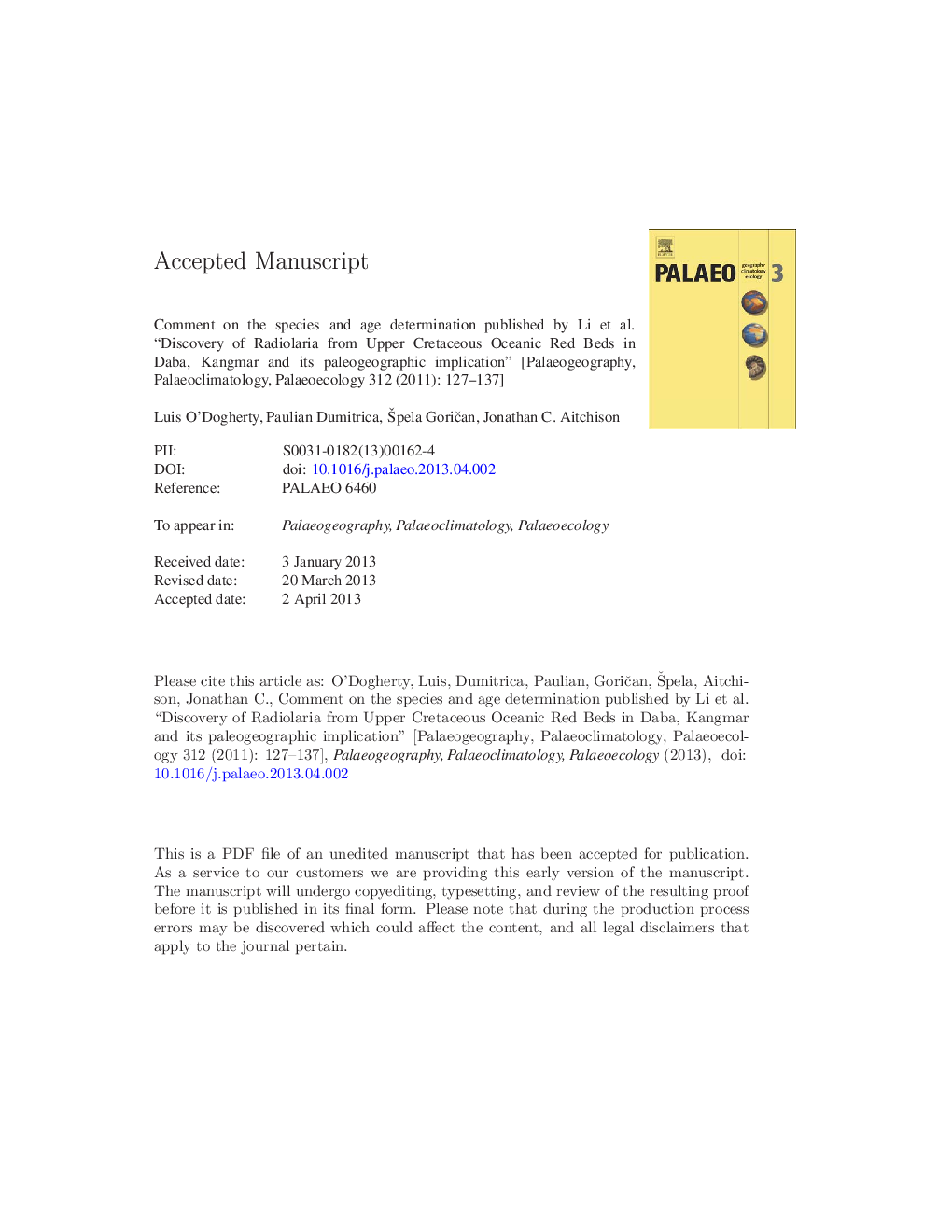| Article ID | Journal | Published Year | Pages | File Type |
|---|---|---|---|---|
| 6349769 | Palaeogeography, Palaeoclimatology, Palaeoecology | 2015 | 14 Pages |
Abstract
Li et al. (2011a, Discovery of Radiolaria from Upper Cretaceous Oceanic Red Beds in Daba, Kangmar and its paleogeographic implication. Palaeogeography, Palaeoclimatology, Palaeoecology 312, 127-137) reported three radiolarian assemblages from Cretaceous Oceanic Red Beds (CORBs) in Chuangde Formation, which they assigned to the Late Cretaceous. With only very few exceptions all species have been erroneously determined and, consequently, the age of the samples was wrongly interpreted. None of these radiolarians suggest a Late Cretaceous age, late Santonian to early Maastrichtian, as proposed in the publication. On the contrary, all radiolarians are indicators of an Early Cretaceous age, early Barremian to earliest Albian.
Related Topics
Physical Sciences and Engineering
Earth and Planetary Sciences
Earth-Surface Processes
Authors
Luis O'Dogherty, Paulian Dumitrica, Å pela GoriÄan, Jonathan C. Aitchison,
